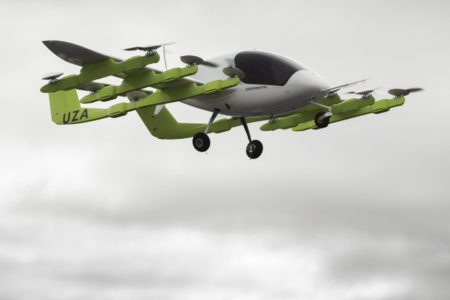January 3, 2020 – The coming of age of vertical takeoff and landing technology (VTOL) is on hand as both the United States Air Force and NASA have issued information requests and proposals to commercial companies for this new category of aircraft for both manned and unmanned models.
VTOL technology is old news in one respect. After all, we have had helicopters since the original VS-300 took flight in 1939. What’s different, however, is that both the Air Force and the space agency are looking for a hybrid technology that incorporates the fixed-wing and helicopter aircraft characteristics.
At Wright-Patterson Air Force Base, near Dayton, Ohio, the Americans have set up a research and development centre for VTOL technology. They have created this new project and combined it with an older one called Agility Prime to find manned or unmanned aircraft to do the jobs of shuttling small numbers of people or light cargo short distances. The technology may also be used for small-number troop insertions, and search and rescue missions.
Currently, the American Air Force has been using a VTOL but its nothing like what they are seeking. Instead, it is a 26-ton aircraft called the V-22 Osprey. Built by Bell Helicopter and Boeing it has been designed for much larger payload and people deployments. It has had numerous problems throughout development and operation and if it weren’t for the $29.1 billion already expended on it, the Air Force might have considered scrapping it in its entirety. The Osprey has suffered from a number of crashes in which lives were lost, and its per-unit cost of almost $84 million, when compared to Black Hawk helicopters at $20 to $40 million each, has raised many eyebrows.
But the specifications that made the V-22 attractive, maneuverability, speed, and adaptability over fixed-wing and rotor airframes is the reason the Air Force is revisiting the idea of the VTOL but this time with a new twist: developing a light aircraft with a powerplant initially that is hybrid, and later all-electric. The current requested specification from commercial developers also includes a non-electric VTOL, manned or unmanned, with a maximum takeoff weight of no more than 600 kilograms (1,320 pounds).
Often described as a flying car, light VTOLs are already out there in prototypes from various suppliers. Back in 2016, I reported on the Ehang 184, a Chinese-built single-passenger autonomous quadcopter with a top speed of 100 kilometers (60 miles) per hour, and a range distance of 16 kilometers (10 miles). Now add the following to the list which includes American and European designs:
- the Bell-Nexus VTOL an American-built aircraft which was displayed at CES 2019 in Las Vegas back in January of last year,
- the Boeing eVTOL prototype which has flown for the first time in 2019,
- the Bevirt eVTOL, from Joby Aviation, a California company, with a working prototype and plans to build a four-passenger plus pilot aircraft capable of flying 240 kilometers (150 miles) on a single charge,
- the Cora eVTOL, from Kitty Hawk, an American company backed by Larry Page and Boeing, a two-seater autonomous air taxi with a 100 kilometer (62-mile) range and capable of speeds of 180 kilometers (110 miles) per hour,
- the Lilium eVTOL, a two-seater German-built model which flew in 2015, with the company planning to offer air taxi service by 2025 within cities providing a covering range of 300 kilometers (186 miles) per charge, and speeds of up to 300 kilometers per hour,
- the Seraph, from Vertical Aerospace, a British, a three-seater or 250 kilograms (550 pounds) payload eVTOL capable of speeds of 80 kilometers (50 miles) per hour.
NASA launched a four-year testing program for unmanned VTOLs last summer in an Urban Air Mobility (UAM) Grand Challenge. Developmental testing is planned for the fall of 2020 with those companies that cut the mustard entered into a full Grand Challenge with cash prizes. The Air Force plans to run similar challenges beginning in 2020 but it is unlikely there will be cash awards handed out. The winners will likely, however, win a pretty pricey procurement contract for the eVTOLs, servicing, and maintenance.
The demand for VTOL technology, according to Business Wire, the Berkshire Hathaway Company, is expected to grow to $3.58 billion by 2030 and was worth $498 million USD last year.
















